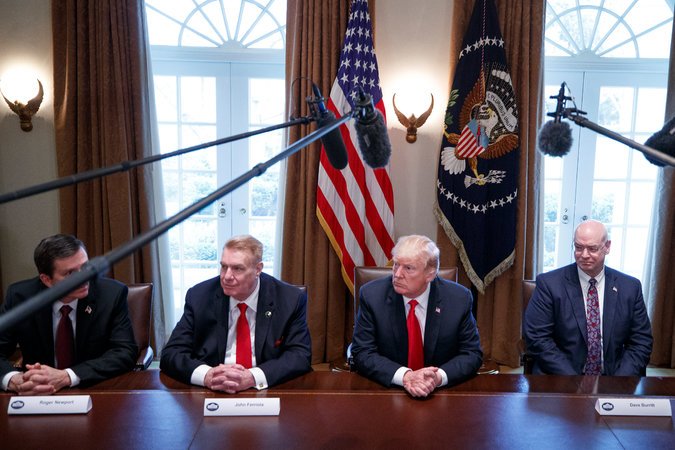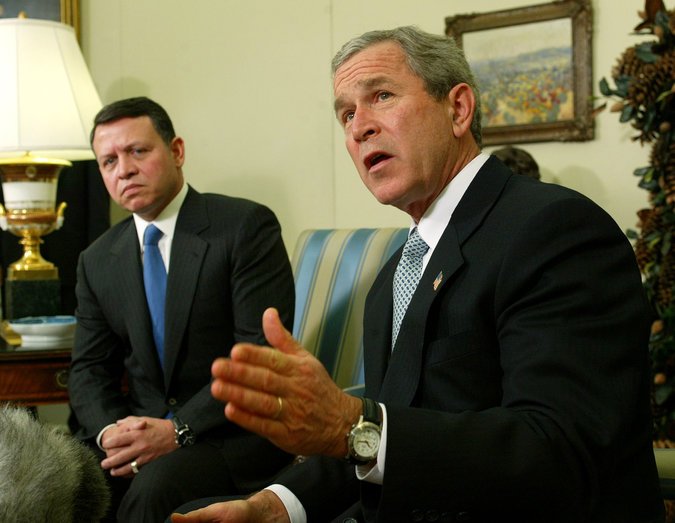Smoot-Hawley “was such a disaster that it’s held sway over American trade policy for over 80 years,” said Joshua Meltzer, a senior fellow at the Brookings Institution who also teaches international trade law at Johns Hopkins University. “No one wants to repeat it.”
He called Mr. Trump’s comments on trade wars “a dramatic departure” from economic orthodoxy.
On the question of who wins, “the easy answer is to say that no one wins a trade war,” said Marc-William Palen, a professor of history at the University of Exeter in Britain and the author of “The ‘Conspiracy’ of Free Trade,” which examines trade rivalry between the United States and the British Empire in the 19th century. “But the more I reflect on it, it seems the winners are those nations that don’t take part.”
Professor Palen cited the late-19th-century trade wars between Canada and the United States, which caused a precipitous drop in Canadian exports to America and led Canada to seek export markets in Britain. “The British Empire was the winner,” he said.

Another “big winner” from a trade war it was not involved in, Professor Palen said, was Soviet Russia, which was largely shunned by Western trading partners after the 1917 revolution and the rise of communism, and was desperate for hard currency. The Smoot-Hawley tariffs, Professor Palen said, caused countries like Italy to abandon American imports and resume trading with the Soviets, forging trade links that persist today.
A textbook case of one country’s “winning” a trade war occurred during the late 19th century when a newly unified Italy imposed steep tariffs on imports from France in order to spur domestic industrialization. France, which was much richer and stronger, retaliated with tariffs against Italy, and Italian exports to France collapsed. Even after Italy abandoned its tariffs, France continued to punish Italy for years with high tariffs.
Advertisement
Continue reading the main story
“France won in the sense that the trade war was brutal for the Italians,” said John Conybeare, emeritus professor of political science at the University of Iowa, and the author of the book “Trade Wars.”
Professor Conybeare said an enduring lesson from that trade conflict was that if there is a wide disparity in economic strength between two countries, the stronger country will probably prevail. “Trump must be thinking that the large size of the U.S. domestic market gives it a lot of bargaining power in any trade dispute,” he said.
While that may be true with much smaller, weaker countries, it is not the case with trading partners of equal or even larger size, such as the European Union and China. “Without that large disparity in economic strength, both sides lose,” Professor Conybeare said.
Newsletter Sign Up
Continue reading the main story
Thank you for subscribing.
An error has occurred. Please try again later.
You are already subscribed to this email.
He cited what has become known as the “chicken wars” of the early 1960s, a trade dispute set off when Germany and France imposed tariffs on American chicken. The United States retaliated by imposing tariffs on an array of goods, including French brandy, light trucks and Volkswagen buses. The United States even threatened to reduce its troop presence in Europe. Despite those pressures, the newly formed European Economic Community did not back down, and in that sense the United States “lost” the war.
The biggest losers, though, were American and European consumers deprived of choices in the marketplace and forced to pay higher prices for what was available.
There were also unintended consequences. American automakers, insulated from foreign competition by the tariffs, failed to modernize, improve quality or reduce costs, setting the stage for a decades-long decline, which for Chrysler and General Motors ended in bankruptcy.

Much the same can be said of the United States steel industry, which since World War II has probably received more protection from tariffs and quotas than any other industry. “They just used the protection to raise prices, fatten profits, pay their executives more and avoid automating and reducing costs,” Professor Conybeare said. “They didn’t use the breathing space they gained to modernize. So much of the U.S. steel industry is using obsolete technology, which is why they can’t compete.”
Decades of tariff protection have done little to stem the industry’s decline. Domestic steel employment dropped from 135,000 in 2000 to 83,600 in 2016, according to the Bureau of Labor Statistics.
Much like Mr. Trump, President George W. Bush veered from Republican free trade orthodoxy in 2002 when he imposed tariffs of up to 30 percent on certain steel products to counter what he claimed was a surge of imports (Canada, Mexico and a number of developing countries were exempted). Although the tariffs were loudly condemned by many Republicans, politicians from steel-producing states supported the move and protectionist Democrats like Representative Richard Gephardt of Missouri argued that the measures did not go far enough.
Advertisement
Continue reading the main story
The European Union filed charges with the World Trade Organization, which ruled that the tariffs were illegal and discriminatory and authorized up to $2 billion in retaliatory measures. The E.U. threatened tariffs on a variety of American products, including autos and Florida oranges.
Mr. Bush abandoned the tariffs in December 2003. He claimed that they had served their purpose, but subsequent studies suggested that they had little impact on employment in the industry and led to a loss of hundreds of thousands of jobs in industries that use steel as a raw material.
Mr. Trump’s pronouncements on trade this week “sound like a very archaic, 19th-century argument,” Professor Palen said, referring to a time when protectionism was Republican orthodoxy and Representative William McKinley of Ohio, who later became president, was successfully promoting his Tariff Act of 1890, which raised the average duty on imports to nearly 50 percent.
The act is widely considered by historians to have been a disaster that led to higher consumer prices and inflation and provoked a voter backlash. Republicans lost their House majority in 1890 and lost the White House and both houses of Congress in 1892. The act was repealed in 1894.
In any trade war, as that example suggests, “the big losers are consumers, who are the vast majority of people,” Professor Palen said. “A few industries may benefit, but there are way more losers than winners. And the poor are the biggest losers of all. People like Trump may not care that much about paying a few extra dollars. But a lot of people don’t have that luxury.”
Correction: March 8, 2018
Because of an editing error, an earlier version a picture caption with this column misstated the given name of one of the sponsors of the Smoot-Hawley Tariff act. He was Willis C. Hawley, not William.
Continue reading the main story
Article source: https://www.nytimes.com/2018/03/08/business/tariff-trump-trade-wars.html?partner=rss&emc=rss
Speak Your Mind
You must be logged in to post a comment.